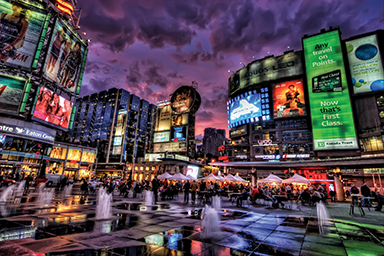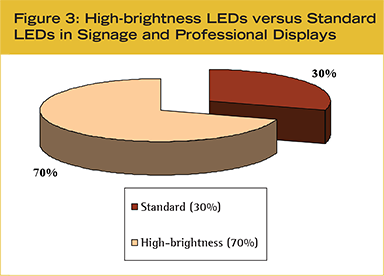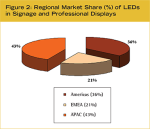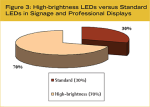By Stephen Montgomery
Light-emitting diodes (LEDs) are used in a variety of both stationary and mobile signs and displays. They have become integral components of illuminated building façades, stadium scoreboards, large outdoor digital billboards, smaller indoor retail displays, taxi signs, restaurant and supermarket signs, internally illuminated and halo-lit channel letters, sign cabinets and boxes, destination signs on mass transit vehicles and backlit liquid crystal display (LCD) screens used for professional display purposes.
Market research has shown the worldwide volume of packaged LEDs sold for use in signs and other professional displays, in terms of quantity, was expected to reach 69 billion units in 2014. Consumption value is also predicted to increase, but with the rising growth in quantity largely offset by declining average unit prices. The global market consumption of packaged LEDs is forecast to reach 147 billion units in 2019 (see Figure 1).
In terms of the aforementioned consumption value, the Asia-Pacific (APAC) region is the leader in relative market share, with 43 per cent in 2014 (see Figure 2), followed by the Americas—including North and South—and Europe, the Middle East and Africa (EMEA).
The LEDs used in signage and professional displays include both high-brightness (HB) and standard component-level bulbs. The HB LEDs are rated at 30 lumens per watt (lm/W) or greater, while the standard types are rated for less than 30 lm/W.
The HB LED category is the current sales leader in terms of consumption value, accounting for 70 per cent of relative market share in 2014 (see Figure 3), compared to the remaining 30 per cent for standard-type LEDs.
The following are just a few examples of how today’s increasing volumes of LEDs are being used throughout the sign and display industry.












